False Teeth – What Are My Options?
Many definitions of “False teeth” lead to a multitude of misunderstandings.
Crowns, veneers and bridges are laboratory-made fillings and restorations but they are “not” classified as false teeth as they are permanently cemented and are not removable.
So False teeth as we classify dentally are the teeth which are removable.
However, a new class of restorations are now available which are placed and attached to implants.
These teeth are “false” but they are not removable ie they are permanently cemented or attached to implants so we may classify these teeth as “bridges”.
So “false teeth” are a common term adopted for “dentures which are removable”. This can eliminate the confusion when the classifications are clear.
False teeth can be attached to existing natural teeth, to implants or they are just dentures which are fully resting your jaws where all your teeth have been lost.
- Dentures
- Dental Implant attachment
- Partial dentures attached to natural teeth
False Teeth Options with Bone Loss
When you lose your teeth then you will also lose bone. Bone is literally held in place and does not resorb when there is a demand on the bone.
If there is no demand on the bone by either natural teeth or implants then the bone slowly resorbs and is lost.
In addition, if you have no teeth on one jaw bone and natural teeth on the other jaw bone then the pressure on dentures from the opposing jaw with teeth will further cause bone loss of the edentulous jaw.
When there are no teeth at all in one or both jaws the option is to place dentures. As the bone under is lost due to time and pressure the dentures may become ill-fitting.
3 Main Types of Dentures
Dentures come in 3 types and I’ll discuss each below.
Conventional
Conventional, also known as ‘full’, dentures, are used to restore both your upper and lower teeth.
Conventional dentures are fitted when you lose all your teeth from your upper and lower jaws.
The only thing that keeps these dentures in place is the fit and suction.
Adaptation of your muscles and knowing how to bite in order not to unbalance the teeth to break the suction seal. This is usually an acquired skill with time, patience and practice.
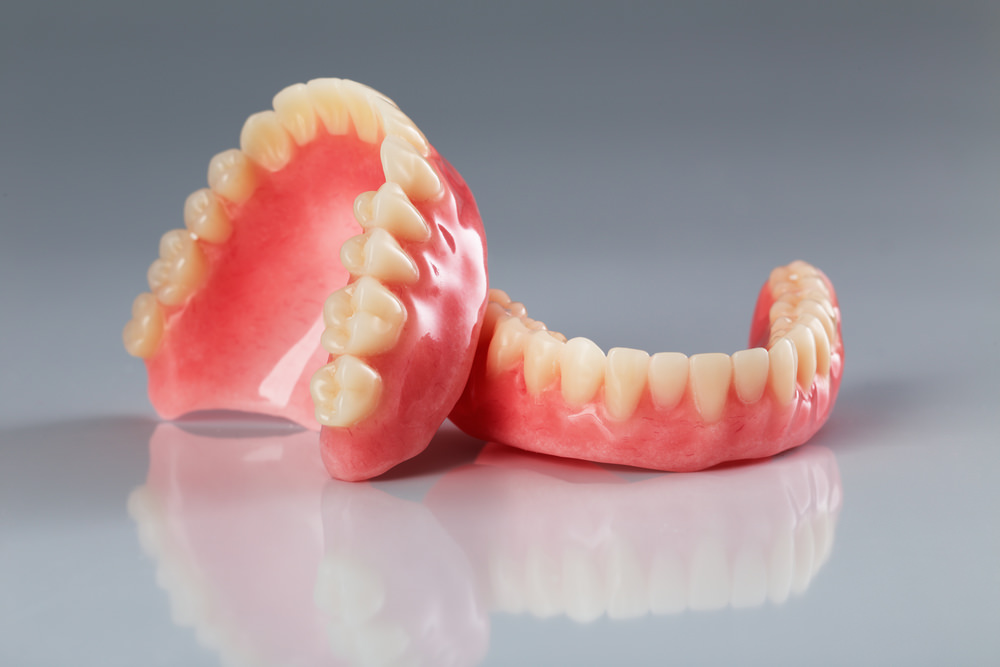
Upper and lower sets of dentures
Immediate
When your teeth are broken down or you are suffering from gum disease and your teeth have to be removed.
A full set of dentures is constructed by a dental mechanic prior to your “removal of teeth” appointment. This is done with planning and approximation.
So at the “removal of teeth” appointment, a dentist will have the denture ready to go. Your teeth will be removed and a denture fitted on the same appointment. In this way, you are not without your teeth in case of work and aesthetics.
There are advantages of Immediate dentures: you are not without teeth at all. You can deal with the psychological aspect of losing your teeth in a manner which is of your own choosing.
There are disadvantages: The fit is only approximate and since this will be your first time wearing a denture the transition can be difficult.
The pain from the extraction sites can be felt the next day and you have to deal with the new dentures as well as the extractions, may escalate your discomfort of recovery. Since there may be swelling after extraction this could further increase your discomfort.
The swelling and discomfort when subsided may cause a discrepancy in the fit of your denture and a reline may be necessary within weeks of insertion of your new denture increasing the cost of treatment.
Partial
Partial dentures were designed to replace only some teeth that were missing on your dental arch.
The standard model uses either a metal clip or undercut fit to attach them to your natural teeth.
To stabilize the partial dentures further, your Dentist may fix them to dental crowns that were either:
- Fitted to your natural teeth
- Implanted in your jaw bone
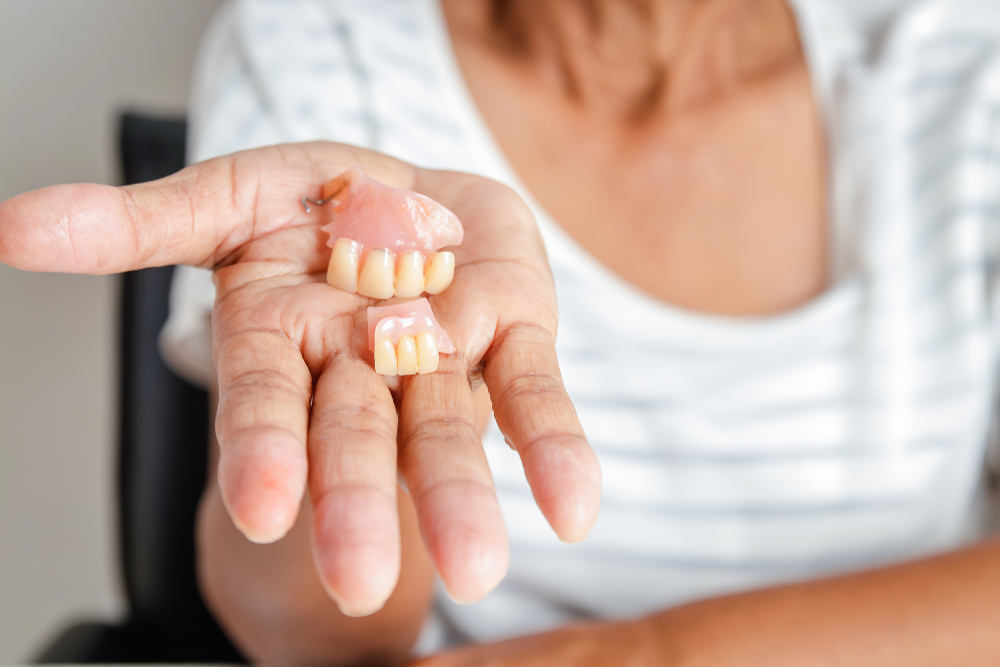
Partial dentures
3 Materials Used for Dentures
There are typically 3 types of material used for dentures. Let’s take a look at them.
Acrylic
An impression of your gums will be taken by your Dentist, which is used to create the dentures.
Though the most affordable option, they may not be the most comfortable.
If your jawbone is receding, acrylic dentures may need to be fixed to secure their position.
Cobalt Chrome
Cobalt Chrome are typically only used for Partial dentures as the partial dentures may be made to be thin.
Also, the Cobalt chrome metal is used to attach to your natural or crowned teeth.
These are more costly than partial acrylic dentures. Cobalt Chrome is not generally used for full dentures due to the comfort level and weight.
However, when used in a partial denture state then they are generally more comfortable, durable, and long-lasting, which may save you money in the end.
Research has also shown that chrome dentures are a better choice in regards to phonetics.
Nylon-Based
A flexible material that can adapt to the contours of your mouth when eating, talking, and smiling.
However, they’re only made in partial dentures.
Alternatives to Dentures
If you don’t feel comfortable getting dentures, are there alternatives if you have bone loss?
Yes, there are. Some are a little rare and some are quite expensive but better overall.
Over-Dentures
A less common type of denture, these are used when you have lost the majority of, or all of, your teeth.
Using either your natural teeth or dental implants to fix them into place, this makes them stable and more natural-looking.
Overdentures uses your own teeth, root remnants or implants to stabilize them and to stop the pressure on your gums and bone.
Dental Implants
Dental implants – a metallic ‘root’ that is surgically inserted into your jawbone – to secure your replacement teeth.
Two implants on your lower jaw can be attached to your present or new denture.
A clip is secured in your denture that actually clips onto the implants and your denture can be easily removed for cleaning.
Since lower dentures are the problematic ones due to the tongue and lack of bone to hold lower dentures into place having implants can be used to hold the bone and also to hold your denture from slipping and moving about.
The other alternative is “All on 4”.
However, if you are missing bone, or have misaligned or damaged jawbone you may be able to undergo a procedure called bone grafting – this is essentially creating bone.
There are a few ways that a surgeon may be able to increase the size and density of your bone.
If you undergo the bone grafting procedure then there is a waiting period to ensure that the bone grafting integrates into your own bone.
Bone grafting can be done as a procedure on its own. Or you may have a bone grafting procedure done at the same time as when your implants are placed into your bone.
These are instances where the bone is not wide enough or a defect of the bone is evident after implant placement.
Bone grafting is a complicated procedure and needs to have an experienced surgeon to explain the ways of grafting.
Bridges
It’s more difficult to get dental bridges if you don’t have existing teeth or implants to support the bridges.
A bridge is fixed into position and is supported by your own teeth which may be broken down and there is a gap where you have lost your own teeth.
Broken down teeth can have a crown placed on the teeth to secure the teeth from fracturing and being damaged by normal biting forces.
These crowns can be splinted (joined together) and a false tooth placed over the gap where you lost the tooth.
So bridges are made from various metals (mostly gold and alloys) and are then covered by porcelain and baked in very hot ovens.
Bridges are made strong enough to withstand the biting forces and also strong enough to support and cover your existing damaged teeth.
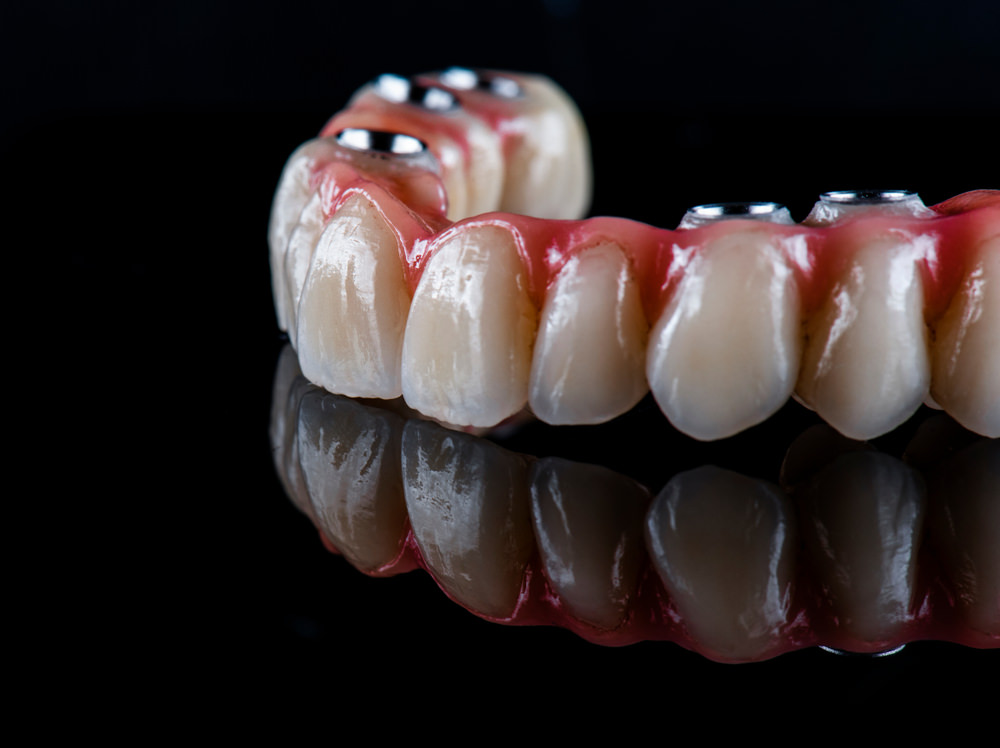
A dental bridge
False Teeth Option Costs
Let’s discuss the cost of your options for false teeth.
Full dentures and acrylic partial are the simplest and most affordable options.
Dentures
Beginning with dentures, what they will cost depends on what kind you need, and the material used to make them whether fully acrylic or partials made of acrylic and cobalt-chromium
You can use our Dental Cost Calculator to get a rough cost for the entire treatment in your state.
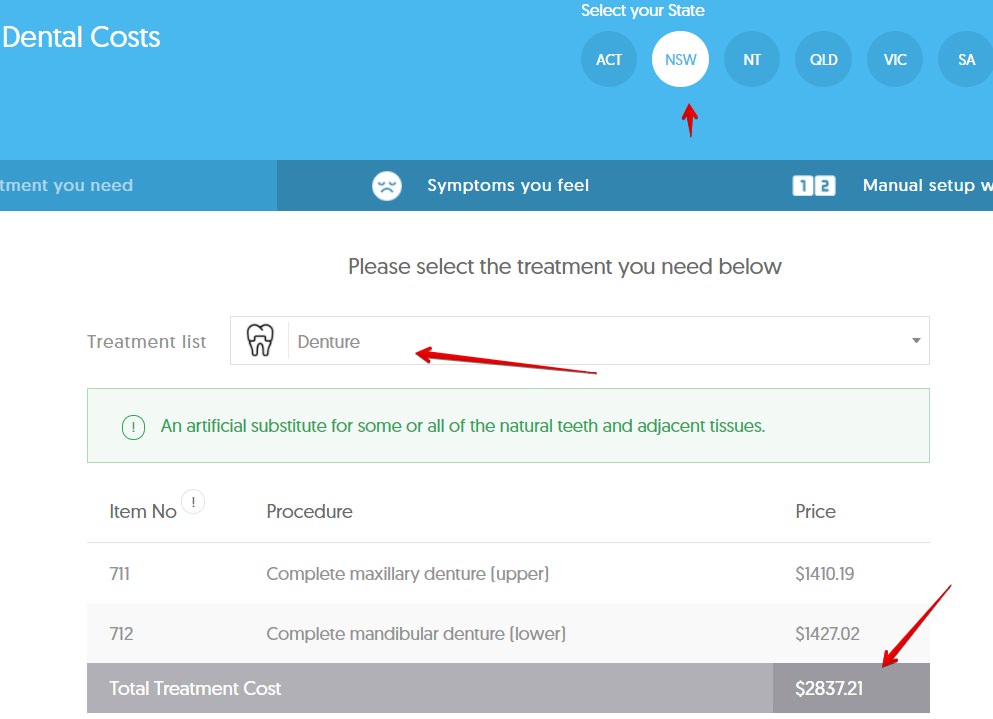
The average cost of dentures in NSW
There is a price variation depending on whether to visit a dentist, dental prosthodontist (dental specialist for bridges, crowns and dentures) or a prosthetist (dental mechanic or technician).
The price variation is dependent on the specialty, area and type of material for your appliance.
Full set of dentures could cost $2,400 and above
Partial dentures are dependent on the number of teeth and the types of clasps and the amount of work needed.
Partial acrylic dentures can cost $1,200 and above.
Partial Cobalt chromium can cost $1,800 and above.
If you are a pensioner then the government has a Dental scheme where the cost of your dentures may be covered by the government.
A waiting list for treatment can be joined at the United Dental hospital in your state or government dental clinics in your suburb. Dental prosthetist costs can also be covered by the government if you are eligible.
The cost of dentures is dependent on:
- Is free to set their own costs
- May source their materials from different places
- Has different overhead costs
- Means-tested and pensioner status
Implants
The cost of implants ranges widely, from an average of $5500 and above.
The number of implants needed the operator costs and the type of restoration which will be placed on the implants.
Factors affecting this include:
- Your location (particularly, the state/territory in which you live)
- How much work you require (that is, how many teeth are being replaced, so long the procedure will take)
- The type of restoration whether it is removable such as a denture or whether bridgework and crowns will be secured to the implants
Our post Dental Implant Costs – How to Negotiate a Better Deal highlights the average price of implants across Australia and advice on working out a better deal.
Tips on Eating with False Teeth
The best tip for eating with false teeth? Slowly incorporate them into your lifestyle.
Begin by drinking with them and slowly begin to have a soft diet intimately building your strength and skill.
It’s best to stick to a soft diet for a few days after getting your teeth. Include soft foods such as:
- Apple sauce
- Pudding
- Oatmeal
- Soup
- Cooked cereals
- Scrambled eggs
- Mashed potatoes
Basically, anything that you don’t have to chew excessively, as this could cause discomfort, and possibly irritate, inflame and damage your gums that are still sensitive.
Avoid foods such as:
- Red meat
- Crackers
- Raw carrots, or anything else crunchy
Also, be sure to check the temperature of food – Try testing hot foods on your lips before putting it in your mouth.
You won’t be able to tell the temperature of the food well otherwise. Meaning, you could burn your mouth without knowing.
Don’t keep liquids in your mouth for long – If you have dentures on your lower jaw, this can make them loose.
Stay away from spicy foods – If you do get sores from the false teeth, spicy foods will burn and sting them.
This will give you and your mouth a few days to get used to your false teeth before moving onto solid food.
Now you’re ready to eat solids, the best way to do so is:
- Cut the food into small pieces or mince your food
- Eat slowly, chewing thoroughly before swallowing
- Chew on both sides of your mouth
- Drink whilst eating so the food doesn’t stick to your teeth
Still stay away from sticky or tough foods, such as:
- Hard-to-chew red meat
- Toffee
- Lollies
- Caramel
- Marshmallow
- Peanut butter
- Raisins
Instead, eat:
- Stewed or slow-cooked meat
- Chicken
- Fish
- Eggs
- legumes
Once fully healed and you’ve accustomed to wearing the false teeth, you should be able to eat most foods but you will be able to accommodate your habits as it suits your lifestyle.
But there are some that will be more difficult, as they’re hard, sticky, or have small fragments.
So, if eating these foods, do so carefully:
- Chewing gum
- Corn on the cob
- Crackers
- Crunchy fruit
- Crunchy peanut butter
- Crusty bread
- Popcorn
- Sticky lollies
- Tough meat
- Nuts
With these hints and a bit of patience, you should be eating normally again in a few weeks.
You may find at first that some foods (usually those salty or bitter) taste different. But your taste will improve given time.
As you begin to chew than the teeth will move and rub on your gums or any protruding bone after your extractions. These are called “sore spots” just a quick trip to your local dentist should be a simple adjustment of the offending area of your dentures.
False Teeth Options – Glue
The adhesive you choose for your false teeth is important.
Typically, glue offers more stability but can be difficult to clean.
Seals and powders are less stable but easier to clean, which minimizes the risk of getting sore gums.
These have been rated the Top 10 best denture adhesives in 2020:
– Effergrip Denture Adhesive Cream
– Snug Denture Cushions
– Reline-It Denture Reliner
– Extra Strength PoliGrip Super Denture Adhesive Powder
– Fixodent Plus Scope Denture Adhesive Cream
– Fixodent Extra Hold Denture Adhesive Powder
– Super Poligrip Zinc Free Denture Adhesive Cream
– Lower Heavy Ezo Denture Cushions
– Cushion Grip Thermoplastic Denture Adhesive
– Dentex Secure Denture Bonding Cream
False Teeth Options Hurting Gums – What to Do
When getting used to your false teeth, expect your gums to be a bit sore.
If the pain becomes too harsh or persistent, contact your Dentist immediately.
Otherwise, you can try the below soothing methods.
Keep Up Excellent Oral Hygiene
Be sure to clean your false teeth daily, so your mouth remains fresh.
Ask your dentist about the best toothpaste and mouthwash you can use.
Also follow any instruction you’re given, such as taking dentures out at night.
Warm Compression
Place a warm compression, such as a wet, warm flannel, over the sore area.
This will help reduce some of the pain hopefully you feel.
Herbal Remedies
Some herbal remedies that may help soothe the pain include:
- Apply aloe vera gel on your gums (just don’t eat for 1 hour after)
- Drink black tea – The tannic acid in the tea can help soothe swollen gums
- The eugenol in cloves has analgesic and anti-swelling qualities
- Try mixing ground-up cloves with olive oil and applying this to your gums, then wash it off with lukewarm water after 5 minutes
- Gargle with saltwater – Add half a teaspoon to a cup of warm water to help heal your sores
Conclusion
Dentures are an option that is cheaper than some others when needing to replace teeth that are no longer there.
Being removable has its benefits, but it also brings with it some disadvantages.
If you are still undecided, our post Dentures vs. Bridges may help, as it talks about the pros and cons of each.
For detailed information on your options, feel free to read these posts below
– Your Dental Guide to Dentures
– Finding a Solution with Dental Implants
If you have any questions feel free to reach out to me via the contact page.
By Dr. V
Created at December 02, 2020, Updated at January 25, 2025
Sorry, the comment form is closed at this time.


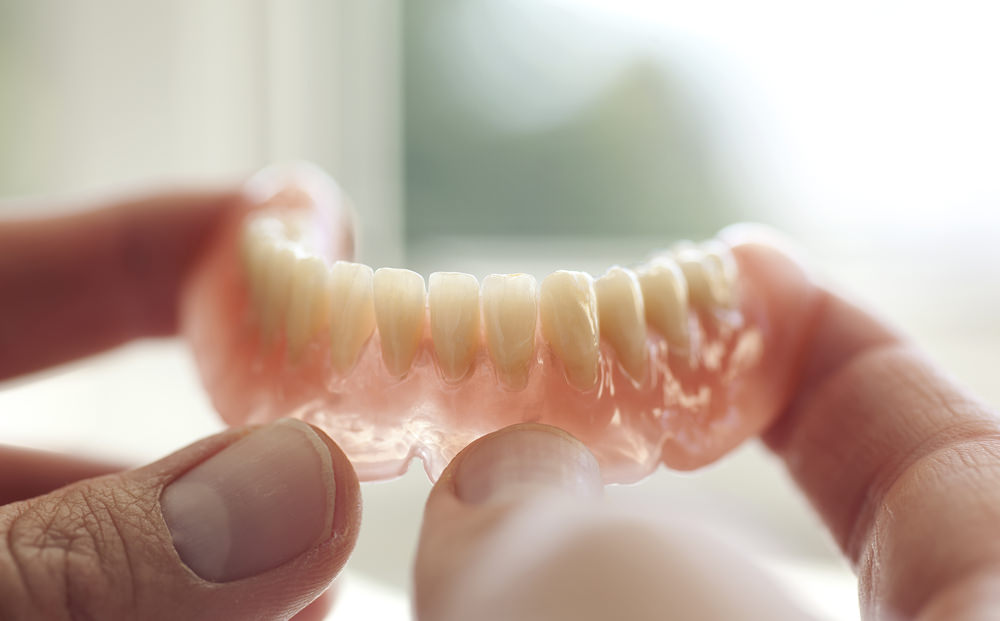
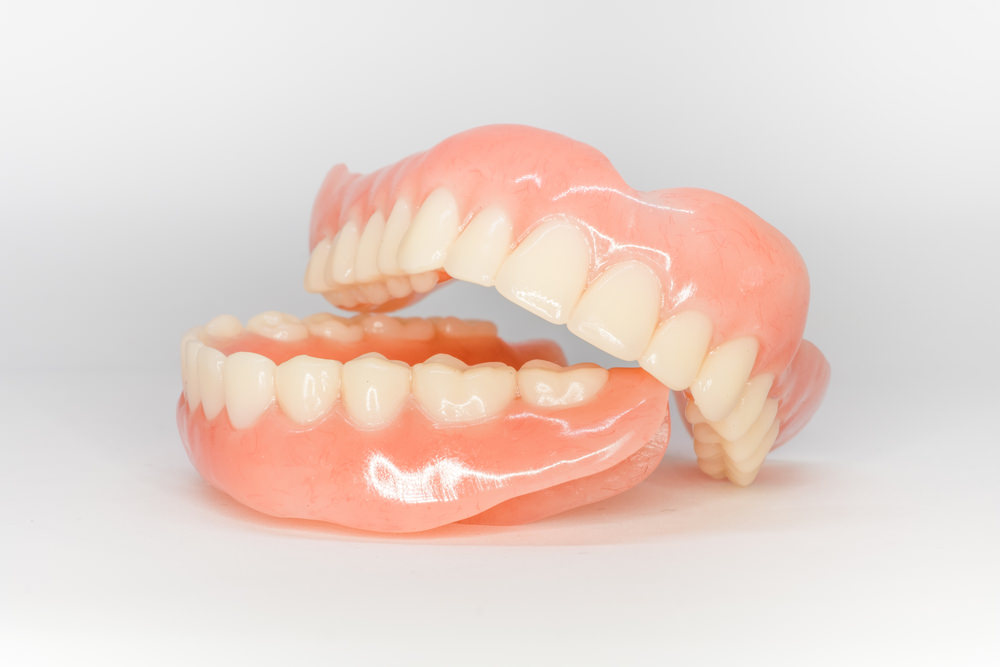


Stephen Miller3 years ago
I found this information very helpful